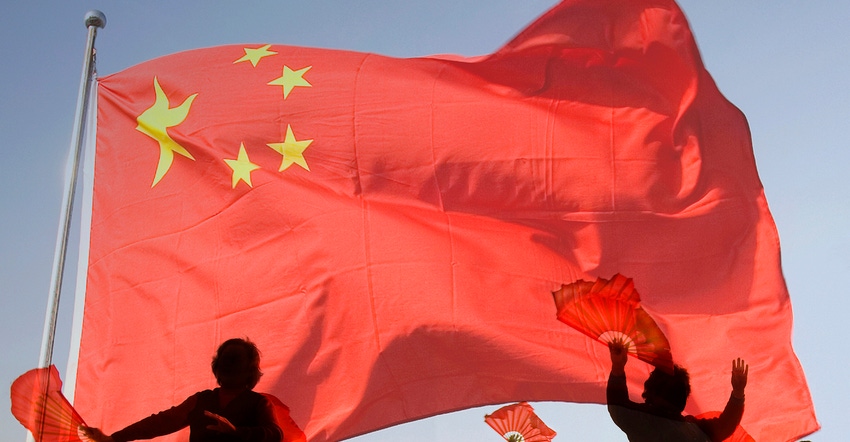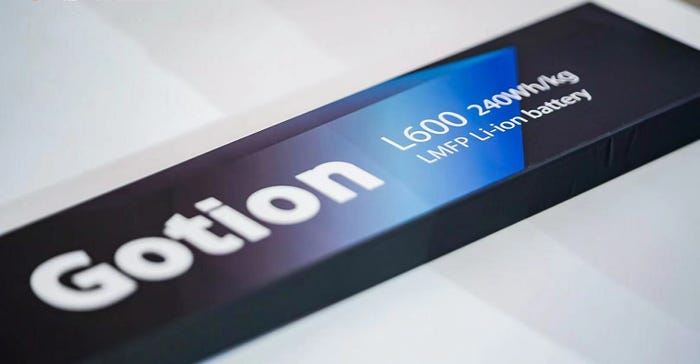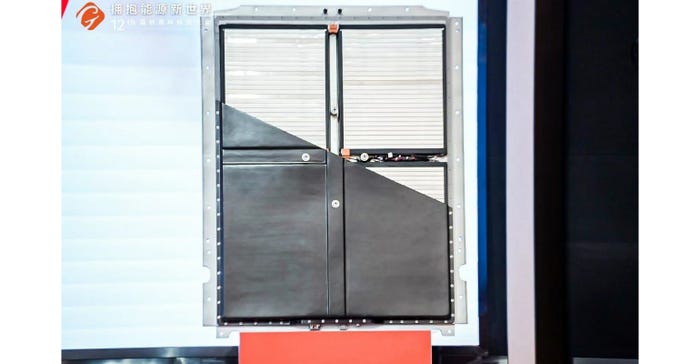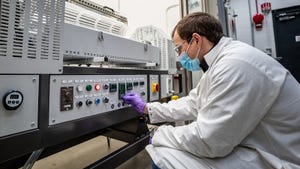China Firms Push Envelope of Battery Technology
China dominates the battery industry from mining to manufacturing; now its technical innovations may be raising red flags for global competitors.

Last week, two China-based companies announced battery technology innovations that could greatly extend the appeal of electric vehicles (EVs) to still-wary consumers: Gotion High-Tech revealed its Astroinno LMFP battery, which foregoes nickel carbide manganese (NCM) and enables a range of 621 miles (1000km) on a single charge. And Greater Bay Technology, a spinoff of China-owned automaker Guangzhou Automobile Group Co., announced its Phoenix cell, which, according to Bloomberg News, can fully charge within 15 minutes for an average range of 310 miles (500 km)—and contains thermal management technology that can heat the battery back from -4F to 77F in five minutes.
These are the latest examples of technological innovations coming from China, the county that has long dominated the EV battery industry in terms of control of raw materials as well as in the immense size of its manufacturing capacity.
Design innovation is the only arena in which its global competitors can hope to out-compete the China juggernaut; the best minds in Europe, Korea, Japan, North America and elsewhere have been hard at work extending and reimagining what energy storage is capable of. But anyone relying on their faith in, say, German engineering or “Yankee know-how” to enable them to thrive in this industry had better watch the global headlines.
Let’s take a look at these two recent battery innovations and try to put them in the context of China’s place in the industry.
Gotion’s Astroinno cell and pack
The Astroinno L600 LMFP battery cell was announced by Dr. Cheng Qian, Executive President of the International Business Unit of Gotion High-Tech. He stated that Gotion has successfully increased the energy density while reducing the weight and pack size of the cell by incorporating manganese into its chemistry. With its weight energy density of 240Wh/kg and volume energy density of 525Wh/L, the cell stands out in terms of energy storage capacity. Its cycle life is also notable, lasting up to 4000 times at room temperature and 1800 times at high temperatures.

Gotion describes the battery pack as having a sandwich-structure double-sided liquid cooling technology and a minimalist design approach, which reduces the number of structural parts of the battery pack by 45% and lowers the weight of structural parts by 32%. The minimalist electrical design enables the length of the battery pack wiring harness to drop from 303 meters to 80 meters, which is only 26% of that of previous battery packs, but the volumetric cell-to-pack ratio has reached 76% and the pack energy density has reached 190Wh/kg—outperforming the energy density of NCM batteries currently on the market.
Astroinno battery's high energy density enables it to achieve a remarkable range of 621 miles without relying on NCM materials.

Greater Bay Technology’s Phoenix cell
Also last week, Bloomberg reported on the claim of Greater Bay Technology that its new Phoenix battery is not only fast-charging but also useable in all weather:
“Greater Bay Technology says its new Phoenix cell is made with superconducting materials and contains thermal management technology that can heat the battery back from -4F to 77F in five minutes. That allows the lithium-ion battery to operate as normal and charge within six minutes in all weather conditions, according to Huang Xiangdong, Greater Bay’s co-founder and chairman."
Bloomberg quotes Huang as saying, “The Phoenix battery not only addresses the long charging time for EVs, but other pain points. It doesn’t matter if it’s a hot day or a cold day, the Phoenix battery’s range won’t be affected.”
When EV-wary, internal-combustion-engine (ICE)-loyal drivers are asked about their reticence about electrification, the responses usually include concerns about driving range, charging time, and battery workability in cold weather. Huang seems to understand this, noting (according to Bloomberg), “Once EVs can be driven and maintained like gasoline cars, then there’s a greater chance for mass adoption.”
China’s place at the top of the supply chain
The Bloomberg article accurately describes Greater Bay Technologies as a two-year-old “unicorn,” the investor term for a startup valued at $1 billion or more—but if the company is a startup, it isn’t one like those founded in a garage or basement by a couple of hungry engineers with big ideas and dreams—it’s a spinoff of a China-owned Guangzhou Automobile Group Co., and presumably has ties to the powers-that-be at home.
As innovations such as Greater Bay’s and Gotion’s latest are announced, it's worth remembering that there’s very little of scrappy startup underdog in China’s place in the battery industry.
According to the latest Clean Energy Associates (CEA) Energy Storage System Supplier Market Intelligence Program (SMIP) report, China remains, by a wide margin, the leading manufacturing hub for battery cells. The majority of cell providers are based in China—a list that includes CATL, BYD, EVE Energy, CALB, and SVolt, as well as Gotion and others.
And China also has the lion’s share of control over the mining and refining of the rare and expensive raw materials required for EV battery manufacturing. The New York Times recently asked the question, “Can the World Make an Electric Car Battery Without China?” and noted that “Electric cars use about six times more rare minerals than conventional cars because of the battery, and China gets to decide who gets the minerals first and at what price.”
According to the Times, Chinese companies, with the support of state assistance, have strategically acquired stakes in mining companies across five continents. Particularly noteworthy is China's significant ownership of cobalt mines in Congo, the primary source of this scarce material crucial for the most widely used battery type. American companies have struggled to keep pace and have even sold mines to their Chinese counterparts.
Consequently, China currently holds a commanding 41 percent share of global cobalt mining, along with the majority of lithium mining responsible for powering batteries. While the global supplies of nickel, manganese, and graphite are considerably larger, and only a fraction of these resources are utilized by batteries, China's consistent access to these minerals still grants it a competitive edge. Forecasts from CRU Group, a consulting firm, predict that China's investments in Indonesia will enable it to become the leading controller of nickel mining by 2027. Furthermore, graphite mining is predominantly concentrated within China's borders.
It's not only the mining and acquisition of these materials where China dominates but also in the refining or processing of them. The Washington Post, in its own recent look at the battery-materials supply chain, noted:
“When it comes to processing, there is one major player: China, which handles more than half of the minerals critical to EV batteries. These elements aren’t used only to power EVs; they also appear in everything from building materials to toys. But as the demand for EV components soars, so could dependency on China’s refining infrastructure.”
According to the Post article, China refines or processes 35% of the global supply of nickel; 56% of the world’s aluminum; 58% of its lithium; 65% of its cobalt, and a whopping 95% of its manganese—all elements that have been critical to EV battery chemistries.
Innovation as the last arena
All of this is good to remember when China makes headlines such as Gotion’s and Greater Bay’s, which signal significant gains in innovations in battery design and technology. China’s domination in mining, refining, and manufacturing is unlikely to change any time soon. The only arena left in which its global rivals can compete, at least in the near term, is the arena of innovation: They cede ground here at their peril.
About the Author(s)
You May Also Like





